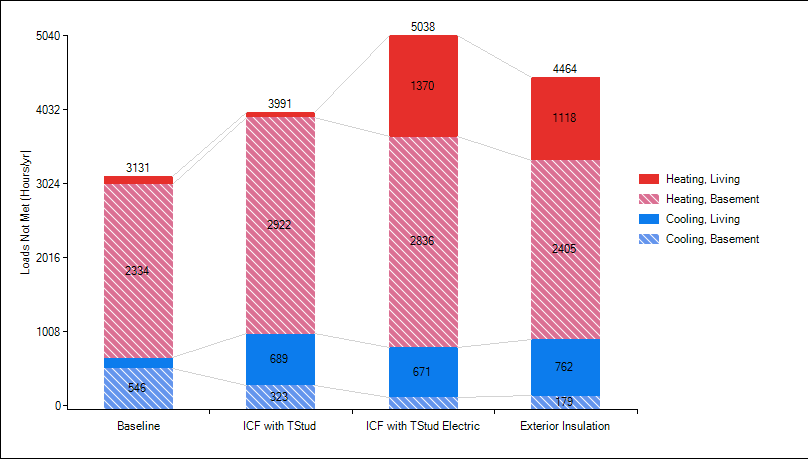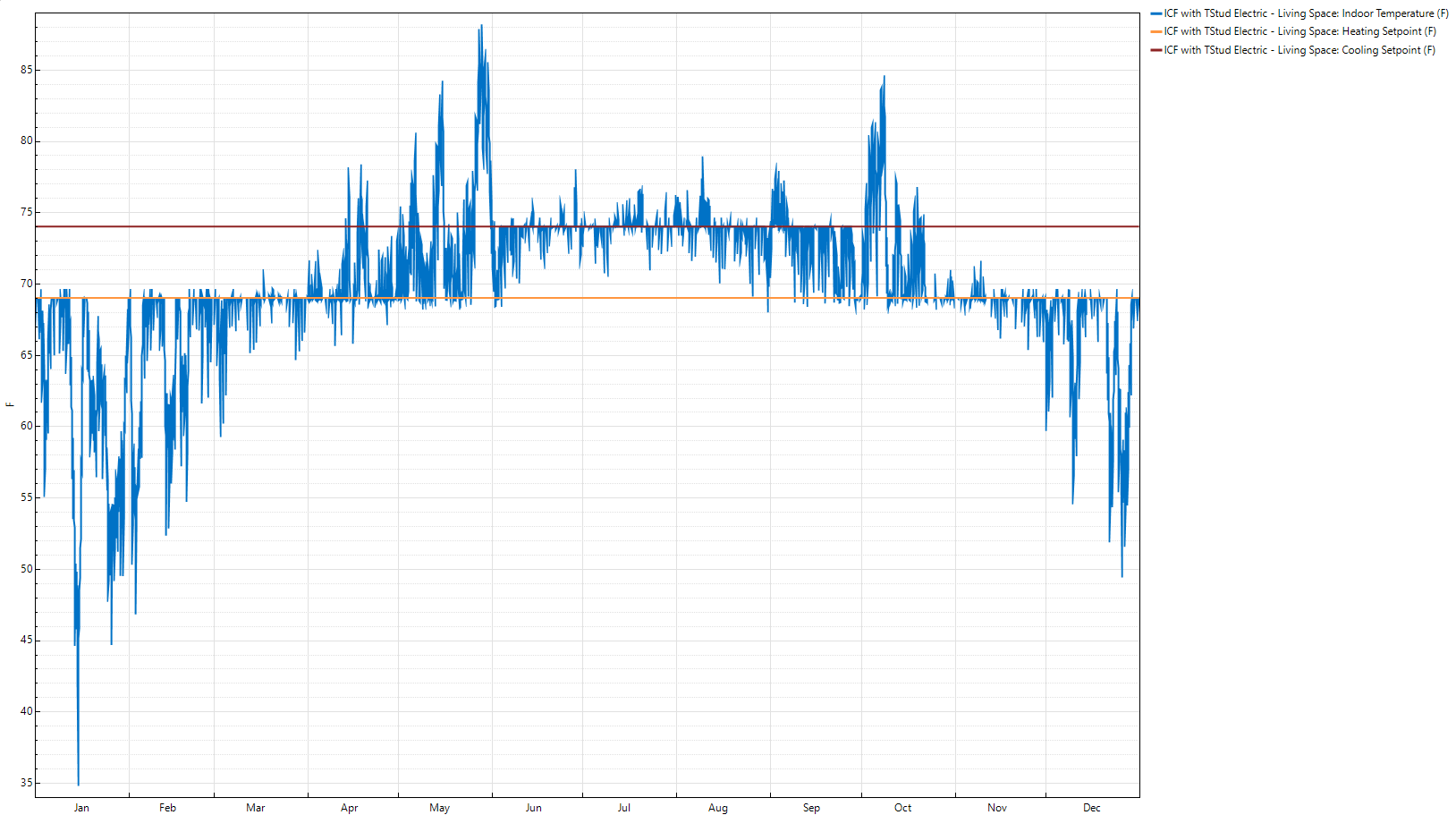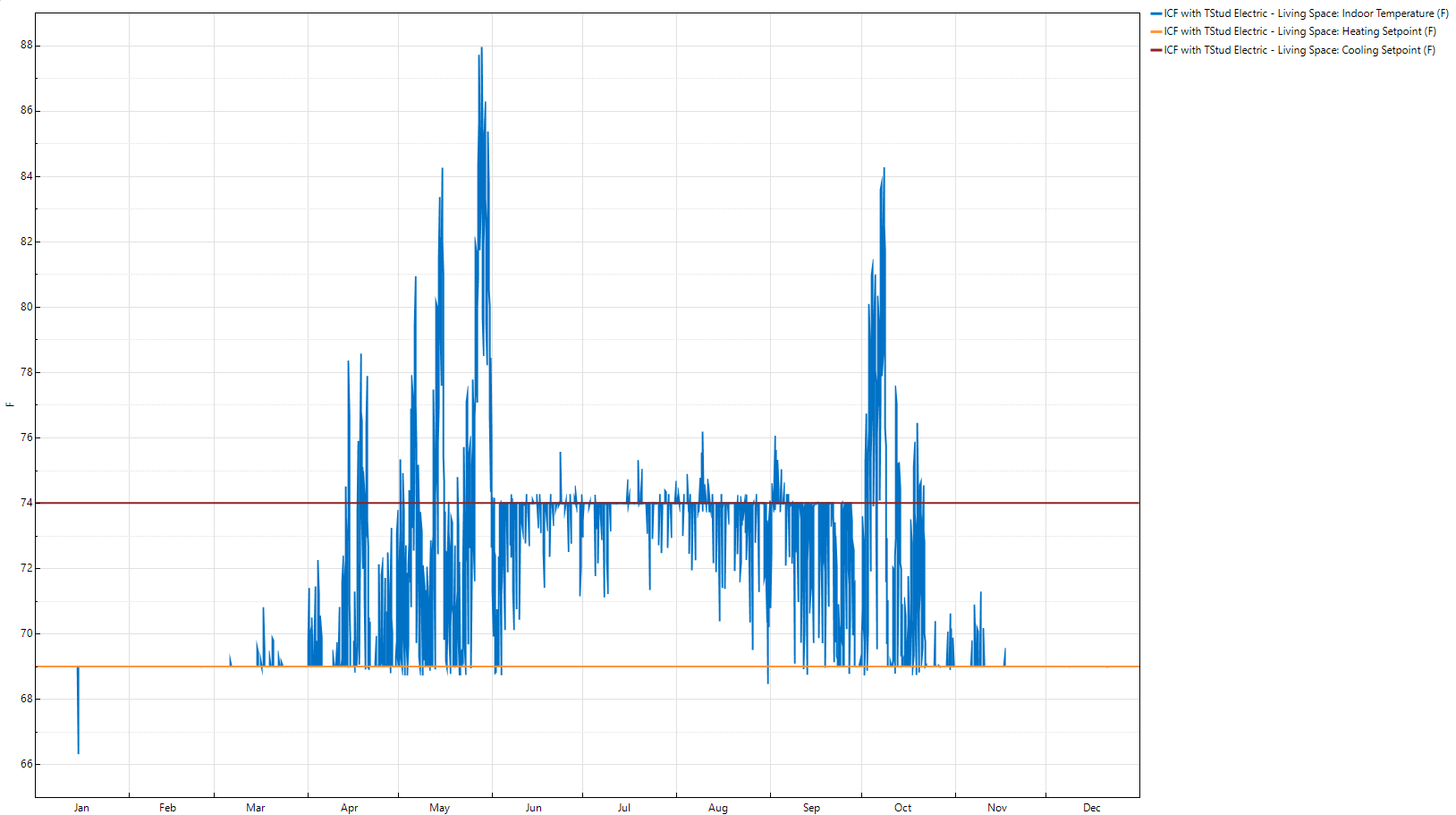BeOpt sanity check: Energy savings with external insulation
Hello,
I'm running energy use simulations with BeOpt on a single family house that I will be building.
Here's some brief details:
- Climate zone 6 (Northern plains, US)
- Single story main floor with full finished basement, ~1800 square feet
- Simple site plan, rectangular with attached garage on SE side.
I'm trying to determine the best cost/performance tradeoff for the amount of insulation to install on the house. I've been using the annual site energy use and energy cost tabs to compare several different designs. I don't have complete cost information, so I haven't been using the parametric analysis and instead have created several potential designs:
- Standard construction for this area (2x6 16", gas heat & hot water, normal fiberglass insulation)
- Better energy efficiency (2x6 T-Stud 24" (full wall R value of ~24), ICF basement, gas heat & hot water)
- Better energy efficiency build but with a minisplit heating system and electric hot water
- Best energy efficiency build (2x6 T-Stud 24" with exterior R16 mineral wool, triple pane windows, minisplit heating)
There are some unmet loads with all of these systems. I'm also planning on some backup resistive heat for the bedrooms, and the main areas of the house will have electric fireplaces.
I'm not a huge fan of gas, but that's definitely the cheapest option according to this, using from 500 to 1000 bucks. However, what BeOpt is telling me is that the 'Best' build only saves about another 50 dollars a year in electricity vs the 'Better' build with the minisplit. This kind of blows my mind since the marginal cost for the 'Best' build is about $35k.
Have I messed something up here? I would have thought an R40 wall with triple pane windows would lose only around 60% of the heat of an R24 wall. Is my main area of loss the R20 basement in that case? I've tried adding extra attic insulation and tweaking other parameters, but it doesn't seem to change much. I'd appreciate a second pair of eyes on this to give me some suggestions on where to go from here.
Thanks, Adam
BeOpt file: https://drive.google.com/file/d/1Lt0P...








